Vintage pictures retain a charm of their own. They evoke a feeling of nostalgia. Over the last few years, I have shared a few vintage pictures of Jaipur in this blog. In my series – Jaipur Then & Now, I shared the transition over a period of 100-150 years through pictures; a set of the current and old pictures shot from the same angle and location. Another blog focuses on old pictures of Jaipur; read Vintage pictures of Jaipur. Most old pictures of Jaipur were clicked by the leading photographers of the 19th and 20th centuries. Some of them were Samuel Bourne of Bourne & Shepherd, Gobindram Oodeyram Studio, Raja Deen Dayal, and Martin Hurlimann. Maharajah Sawai Ram Singh II’s photography is one of the least known facts of Jaipur. He was one of the kings of Jaipur and ruled from 1835-to 1880 AD. He had a keen interest in photography and remains the sole Jaipur king to document 19th-century Jaipur.
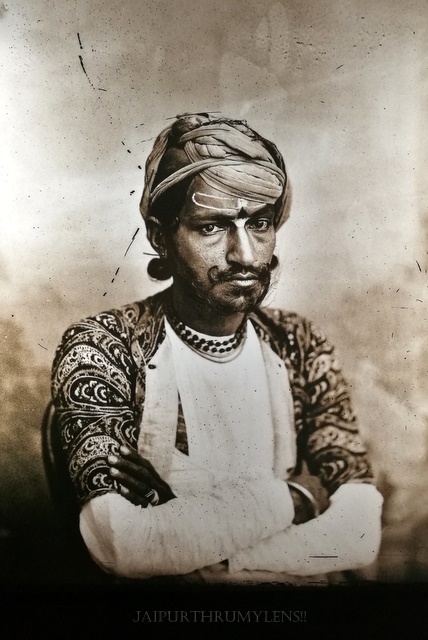
His photographic collection includes several glass plate negatives that escaped the attention of the world and many of these were discovered as late as the 1980s. It is believed that a collection of close to 2000 negatives were found in Tasveerkhana (photography room) of Jaipur City Palace.
Sawai Ram Singh II & Photography Collection
Though his collection is eclectic, it includes a variety of pictures. I enjoyed the opportunity to witness some of his pictures in one of the photography exhibitions in Jaipur. Some of these represent historic & rare pictures of Jaipur which I have never observed hitherto. It appeared befitting to share them since this is a Jaipur blog. Most of these pictures are glass plate negatives collodion. A few are in a grim condition while others are usable with some deterioration marks. There are 3-4 dominant themes in his picture collection.
Zenana & women
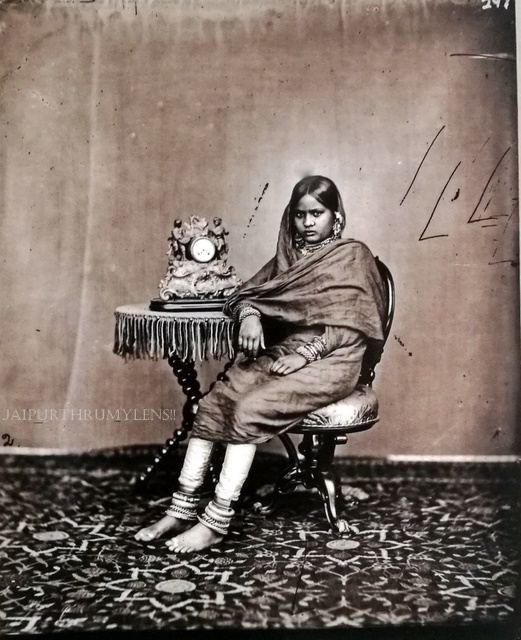
A considerable number of Maharajah Sawai Ram Singh II’s pictures have women as a subject. Information by way of the names of the subjects is unavailable. A variety of theories have been proposed to solve the theory. Some say these were mistresses or concubines, others propose these were probably royal ladies. The most befitting theory is they were dancers. Maharajah Sawai Ram Singh II established a theatre in Jaipur – Ram Prakash Theatre. Dance and theatre shows were held here on a frequent basis. Time and again, outstation performers visited Jaipur. Ram Prakash Theatre was the first cinema hall in Jaipur and started in 1879 AD. It is a reasonable probability that the subject of these portraits represents performers and dancers from Ram Prakash Theatre. Their clothes don’t depict a royal connection.
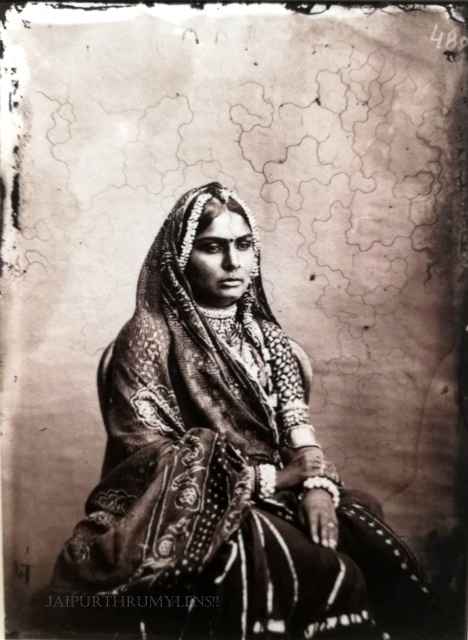
The woman in the following picture is wearing Sari in a style that was not prevalent in this region.
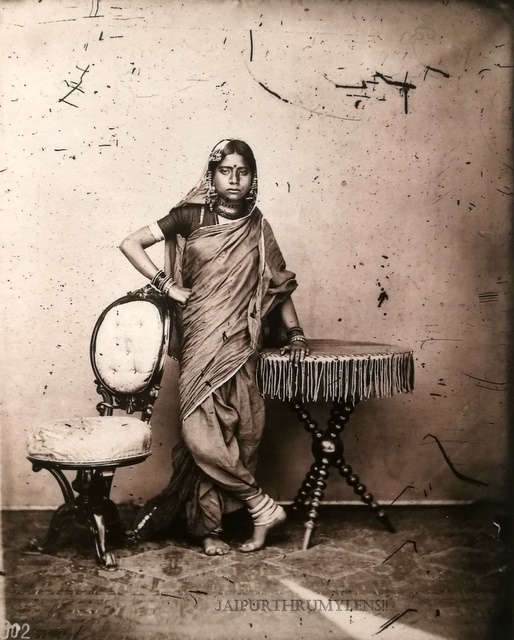
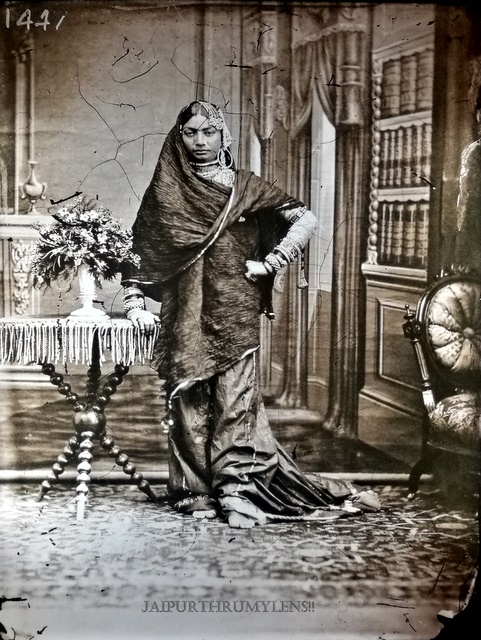
Many social historians consider this a considerable feat because women in those times used to live in the Purdah system. Maharajah’s interest to photograph them shows he did not belong to the old school advocating the Purdah system for women.
Visiting Dignitaries & Guests
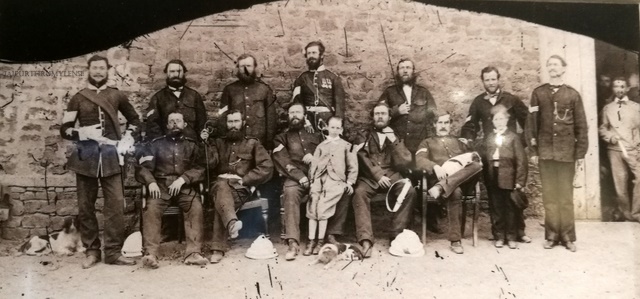
There are many pictures of the visiting dignitaries, especially the Europeans or British. Jaipur state had entered into a treaty with the British (India was under British colonial rule.) which allowed the king to govern in lieu of revenue sharing. Therefore, a British political agent would oversee the affairs of the state. There are many pictures of Europeans and nobles from other Indian states. One of the most prominent people he photographed was King Edward Albert, Prince of Wales in Jaipur during his visit to India in 1875-76.
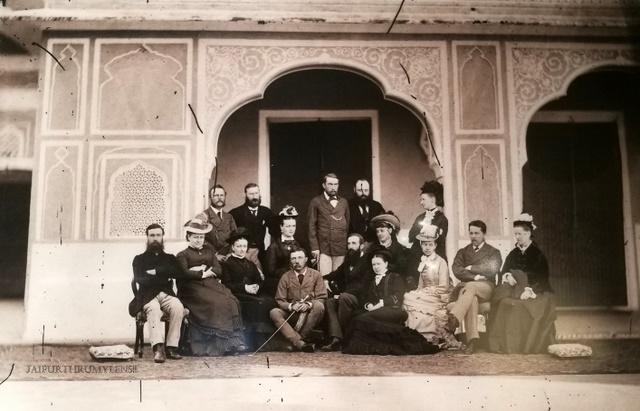
Featured in the following picture are European men at a hunting party. Hunting was a popular sport among the ruling British and the royalty would often organize hunting parties for their visiting guests. A couple of buildings built by the royalty for hunting excursions provide good evidence to corroborate this. Read more in Hunting lodge in Jhalana. You can also read more on the history of hunting excursions in Shikaar Bagh
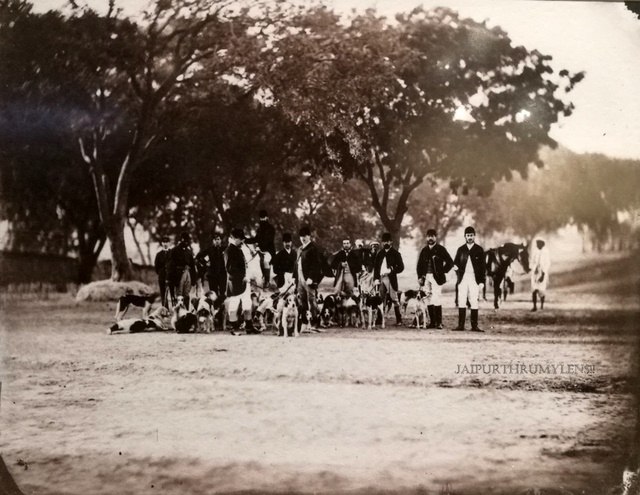
The three young British girls at the Residency (the residence of a British political agent in Jaipur.)
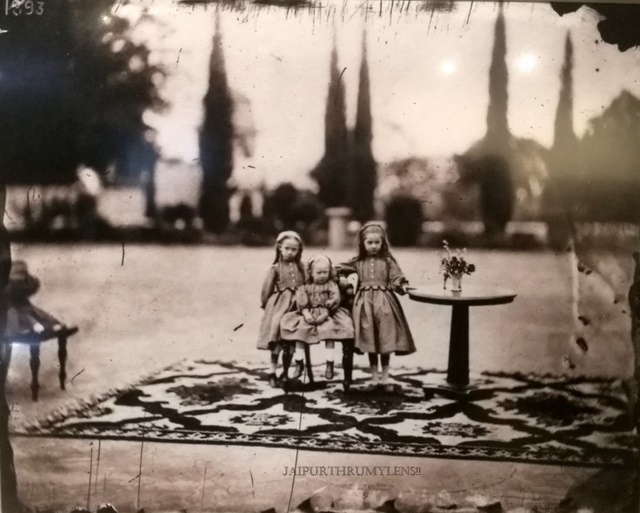
The below two pictures capture aristocrats from the Jodhpur court.
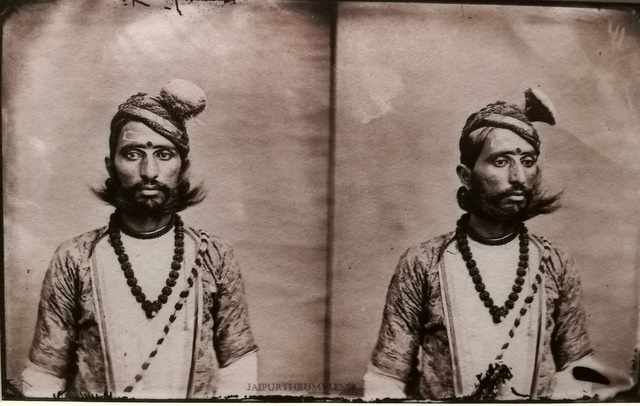
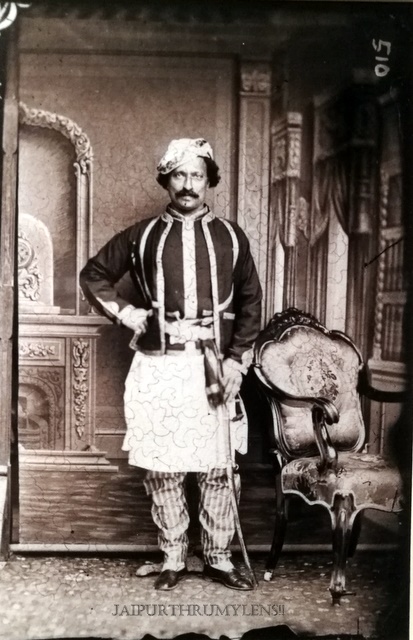
Self Portraits | The Pictures of Maharajah Sawai Ram Singh II
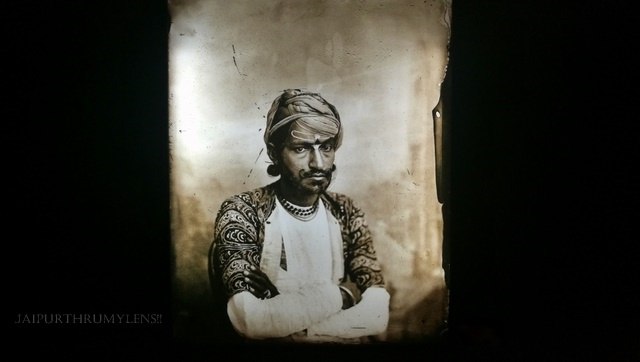
There are quite a few self-portraits of Maharajah Sawai Ram Singh II. It is likely he employed someone to click his pictures, maybe he hired the service of some other visiting photographer or maybe trained a servant. There is no conclusive answer. But he remains an exception among his lineage – the sole king to enjoy so many pictures clicked.
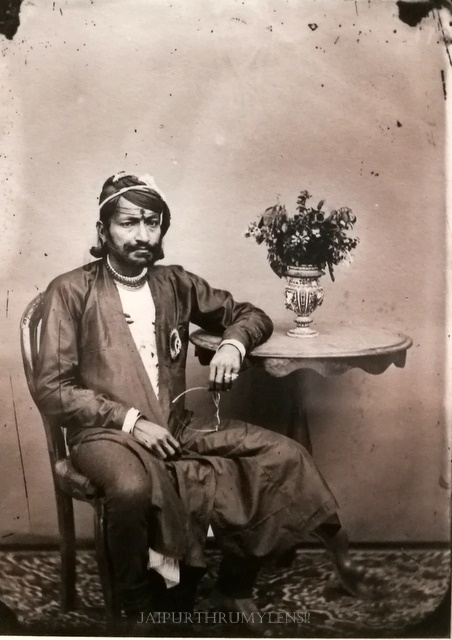
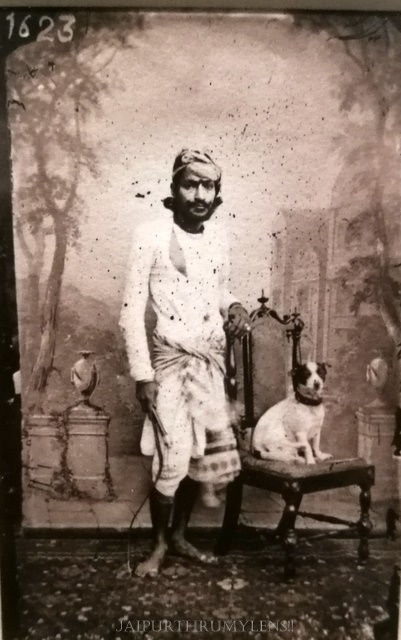
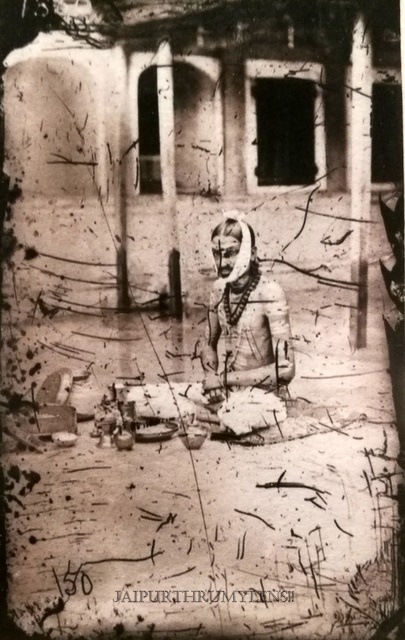
These pictures provide light on many aspects of his personality. A considerable number of his portraits capture his routine – offering prayers, and riding a horse to name a few. He was a devout follower of Lord Shiva, an exception in the lineage of Vaishnavas.
Old Pictures of Jaipur

There are many fascinating pictures of Jaipur from the 19th century. The most interesting one is a picture of City Palace with Mansagar Lake and Tal Katora in the background. It seems to have been captured from Issar Laat. Other compelling pictures are of Galta Ji, Ghat Ki Guni, Hawa Mahal, Mansagar, Badi Chaupar, and Chaura Rasta, among others.
Seen below: Chhoti Chaupar with Nahargarh Fort in the background.
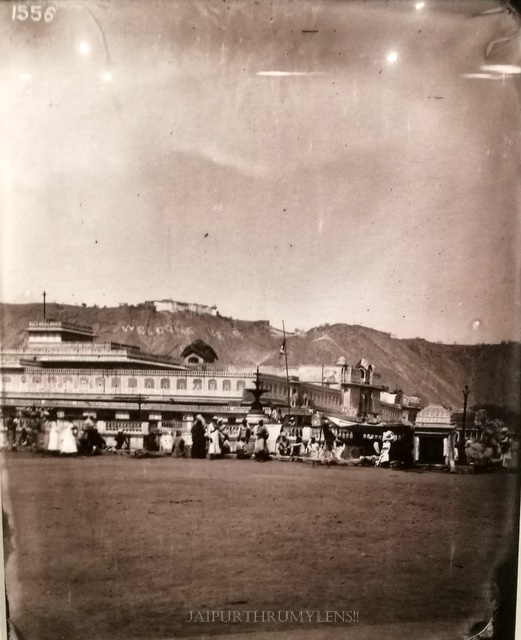

The residency is now better known as the Raj Mahal Palace hotel.

Very few people will be able to recall this place which looks like a village. This is Ghat Ki Guni. Read more about this place in Ghat Ki Guni | In a class of its own
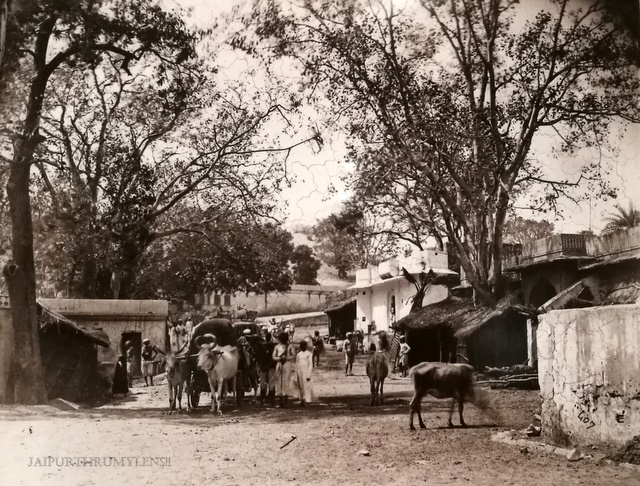
The ceremony during the arrival of Prince of Wales Edward Albert during his India Visit in 1876-77 AD in which he laid the foundation stone of Albert Hall Museum in Jaipur.
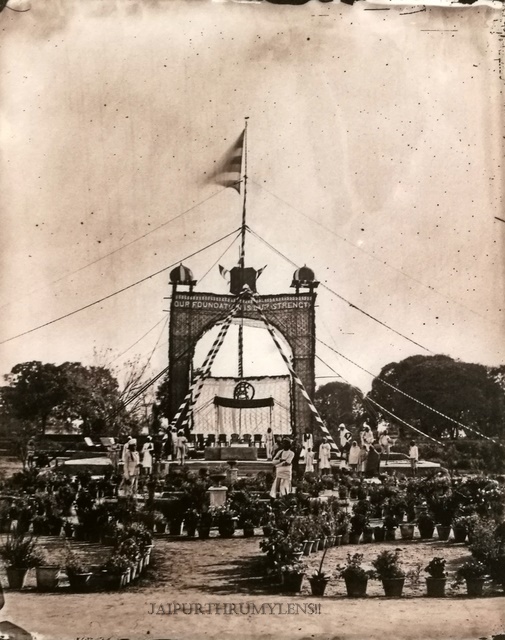

A welcome gate at Badi Chaupar, Jaipur during Prince Of Wales India trip – February 1876 AD.
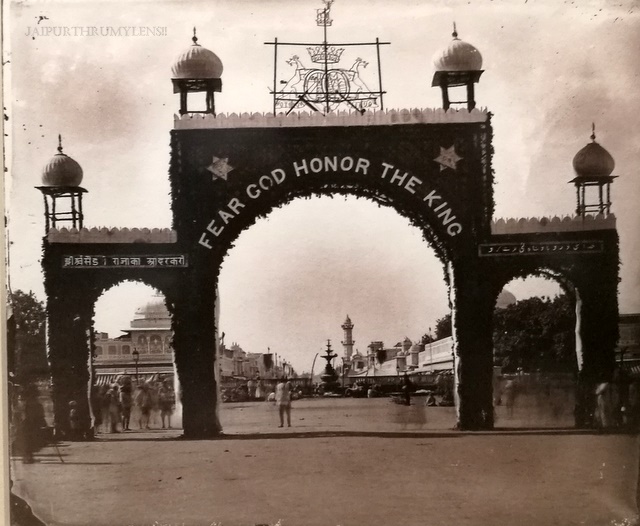
How did Maharaja Sawai Ram Singh II’s interest develop in photography & camera?
How Maharajah Sawai Ram Singh II’s interest developed in photography is unknown but some sources claimed that he invited British photographer T. Murray to aid him in his photography in the 1860s. It is believed that Mr. T Murray visited Jaipur many times; quite likely it was in connection with the photographic interest of the king. Some scholars believe he became a photography teacher to the king. In the initial days of photography, when the photographic equipment was bulky, he included his camera with him during travels and documented the lives of his time. It includes not only Jaipur but other cities where he visited. He was updated with recent photographic launches and development. It is likely that during his visits to Calcutta(Kolkata) which was the imperial capital and one of the leading cities in Asia during that time, he took out time and visited photography studios and shops.
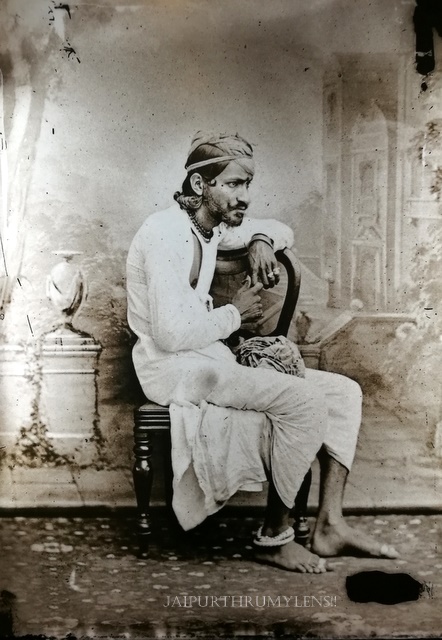
Maharaja was a member of the Bengal Photographic Society which was established in Calcutta in 1856 with a large number of Indian and European members. The aim of this society was to help in the development of photographic interest. It was during this time that almost all royals developed a keen interest in photography often employing or commissioning photographers for pictures. Lala Deen Dayal was one such photographer. But what unquestionably makes Maharajah Sawai Ram Singh II stand out among other royals is that he was an ace photographer himself and devoted considerable time to photography. He was presumably the first Indian photographer king. Only another known contemporary is the king of Tripura but there is a stark difference in their photographic interests. His work consists of albumen prints, the technology standard in those days.
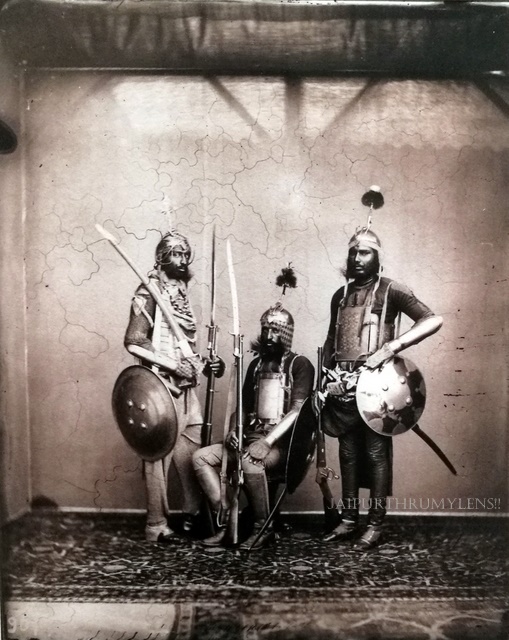
Facts About Maharajah Sawai Ram Singh II
Maharajah Sawai Ram Singh II was one of the most acknowledged kings of Jaipur. He was a reformist and gifted the city with the first college and girls’ school, a new state museum, and the first art and craft college- Rajasthan School of Art & craft. The king was known to disguise himself as a commoner and mingle with the crowd with the intent to identify the authentic event rather than rely on official informers; a king like none other.
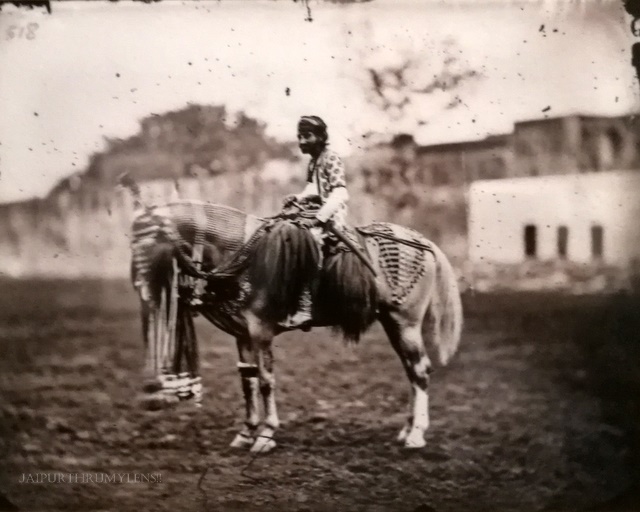
Stay updated with Jaipurthrumylens!! via:
While Maharaja Sawai Jai Singh II, the founder of Jaipur is credited with being a visionary there is no denying Maharajah Sawai Ram Singh II was a true reformer. He is credited for giving Jaipur the famous terracotta pink color during the visit of King Edward Albert, Prince of Wales. His photographs remain a leading resource for those studying the history of Jaipur and a reference point for social anthropologists. I can easily conclude that Maharajah Sawai Ram Singh II was no ordinary king even though he might resemble a commoner.
Disclaimer: There is no commercial interest in using the above pictures; it is purely an academic one. These are from a public exhibition organized by Alkazi Foundation for the Arts (AFA) and City Palace Museum in 2019.
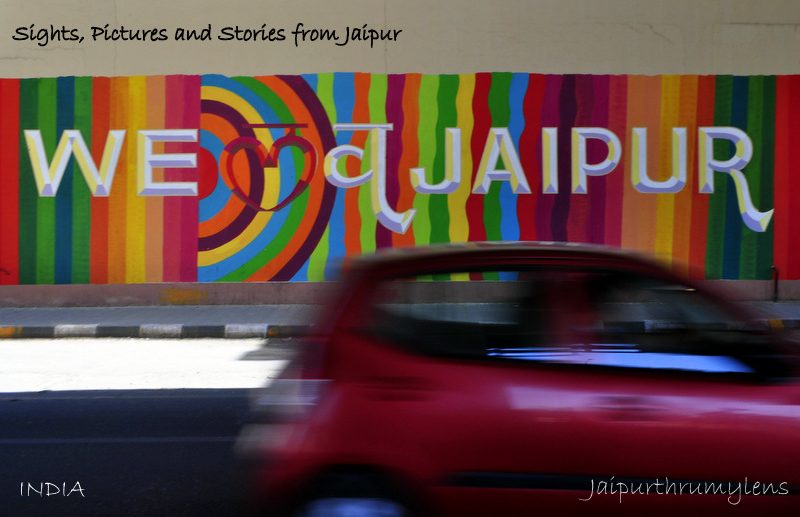
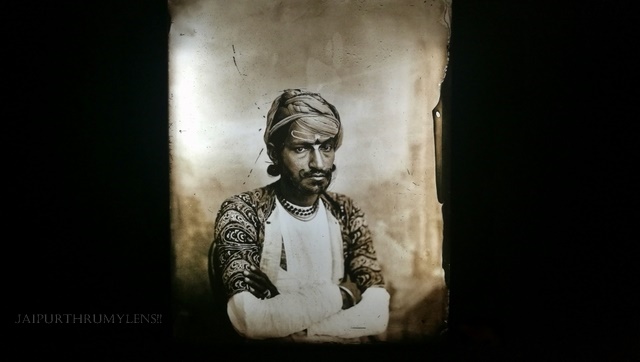
108 thoughts on “Photography By Sawai Ram Singh II | Jaipur Thru The King’s Lens”